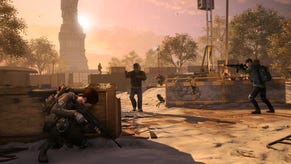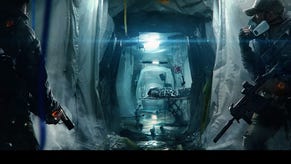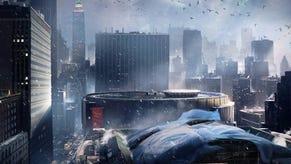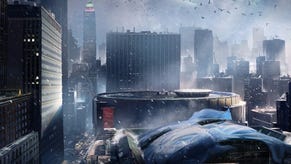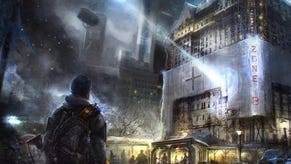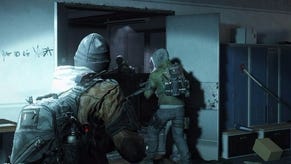Squad goals: Returning to The Division
Empire state of grind.
It's been a while, New York. About three months in fact. Three months since Ubisoft and Massive Entertainment surprised an audience turned cynical by Watch Dogs, The Crew, Assassin's Creed Syndicate and anything else with a watchtower to climb. The Swedish studio delivered a coherent and compelling 'shared world shooter; a game that matched Ubi's obsession with map-littering busy work with an infectious loot grind and deceptively complex character building. Not to mention the genuinely innovative combination of PVE and PVP, The Dark Zone.
Yet I can't be the only one who felt like they'd had enough of The Division after hitting the level cap and messing about in the end game for ten or so more hours. The excitement of new knee pads with higher stats can only sustain interest for so long. And the Dark Zone, as interesting as it was, had become a frame-stuttering mess on Xbox One, a place overrun by high level gangs intent on ruining everyone else's enjoyment.
It turns out, though, that in the three months since launch, Massive has been tirelessly working to improve its game, injecting it with the kind of regular content updates that would make a Destiny fan drop to their knees and weep, a commitment to improving the technical hiccups and splutters, and now, with Underground, the first proper DLC drop. And it's quite the drop.
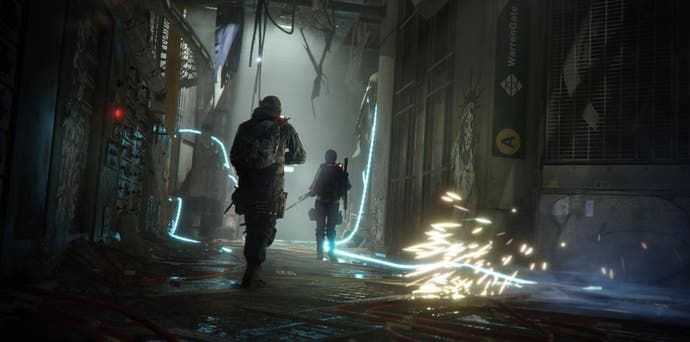
Actually, before we even get to Underground and its procedurally generated dungeons, it's probably a good idea to take a quick rundown of the new content that has appeared in between launch and today. Firstly, the long-anticipated Incursions (missions designed for highly-communicative teams who want to be pushed to the extremes of difficulty). Many assumed these were going to be Raids, in the Destiny or even WoW mould, so what followed was always going to be a disappointment. The first Incursion blended horde-mode style waves with a few new enemy types and an uncompromising level of difficulty. In truth, it's rubbish.
The second and third Incursions are similar but have been fleshed out to take better advantage of The Division's strengths - the cover-and-move gunplay that allows teams to outthink and outflank the enemy using the environment along with their skills and special abilities. They're still bloody hard, though, and all that effort is barely worth the gear that's rewarded.
Much more friendly, although a little too repetitive, are the new High Value Targets. It's a slightly convoluted system, but once you've cleaned up all the little events and tasks in an area of New York, you unlock Search And Destroy missions. These send you out into that same area, and ask you to clear out three strongholds of enemies. Each stronghold awards you with intel - effectively a new currency - and mission completion gives you two more. Head back to the Base Of Operations, and you can buy a contract to take out a high Value Target. Head to his or her location, get your cover-shooting on, take them out, win gear.
It's not exactly thrilling but it's a very welcome new endeavour to add on top of your typical Daily Challenge runs and Dark Zone meddling (which, incidentally, is much smoother now on Xbox, and has had the high level gangs syphoned off into their own instances).
So, even without a Season Pass, The Division has given a serious amount of new content to its players without asking for any more money. Even the busy work tasks dotted around the city have nearly doubled - there is unquestionably always something to do, although those who are truly on the gear grind will likely stick to the Dailies, Incursions and HVTs.
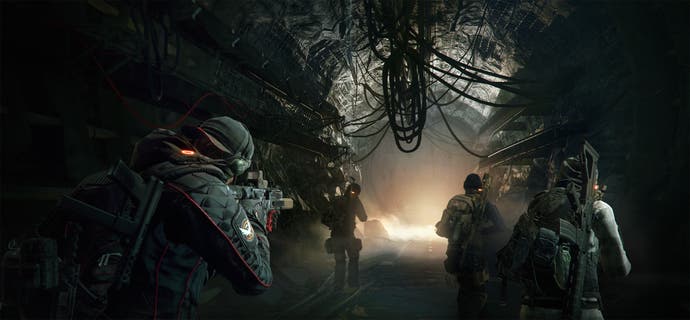
And now they all have something new to play with, and it's very impressive indeed. Underground opens up a brand new area of the Base Of Operations known as The Terminal. This is a new social space that can be Fast Travelled to directly (ignoring the first day of server errors, access bugs and crashes - frustrating at the time but quickly forgotten about), and the hub for planning excursions into the eponymous Underground, a haven for all manner of thuggery and violence.
Actually, it's just a neat way for The Division to handle procedurally generated content without Massive having to worry about skyboxes. At a large table filled with laptops, you plan your mission. At first, you can only choose one 'phase' (later, you can stack three phases on top of each other to create a much longer and much harder mission, for greater gear), a couple of difficulty settings, and whether or not you want to matchmake using the game's exemplary team-up system.
From there, you and your squad board a train and end up in the middle of what is effectively a dungeon. It's different every time, with a great variety in physical layout, mission types, enemies and even how they're paced. The single phases never take longer than 15 minutes, if your team wipes you can't respawn, and you're always awarded a nice bit of gear or two at the end.
For players with top level gear scores already - The Division's 'light level' equivalent - these first few hours in The Underground won't prove hugely bounteous, and they'll need to rank up and unlock the higher difficulties. For players like me, though, who left the game behind when the thought of a daily grind for gear held as much appeal as a bike ride with Boris Johnson, these early missions are a treat. I jumped up from a score of 140 all the way to 200 in a matter of hours. This would have taken weeks had I tried to do it a couple of months ago. It's a smart equaliser, as the top gear still requires hard graft, but the rest of us aren't left behind forever.
Underground is both technically very impressive and a further testament to the sheer hard work Massive has put in to make The Division a success. In myriad trips into the belly of New York's subways, I've rarely seen a repeated room, and no mission has felt like any other, apart from the obvious fact that everything you do in The Division pretty much feels like everything else you do in The Division. You're going to be shooting. A lot.

And that's likely why it won't be long before I'm heading out of the city limits and saying farewell to NYC until the next DLC drops, because the gear and gameplay loop just doesn't quite have that same otherworldly pull as a Destiny or even a Diablo. Massive has created a very good shooter, and one that's far more comfortable in its skin as a loot RPG than Destiny, but it just doesn't hit its own sweet spot regularly enough. Too often it can feel like an enjoyable but unfulfilling blast to unlock another gun that does the exact same thing as the last one, albeit with better stats.
If The Division is going to keep an audience beyond the truly passionate core, it may well be time for Massive to loosen up and start bringing in the inevitable silliness that games like this need in the long term. We want more named weapons that behave in different ways, daft clothes that make us stand out and bizarre bosses that shake up the gameplay formula. When players invest hundreds of hours into a world, they want to feel like they're leaving a mark.
Massive has been smart on not turning New York into Saints Row's Steelport yet, and nor should the game ever fall completely into the realms of the absurd at any point, but it definitely feels like the right time to kick off the shoes and get a bit of a party started. There are glimpses - a subterranean rave kicks off the Underground missions, complete with UV paint and banging techno from an unmanned DJ booth, but it quickly falls back on muted colours and endless firefights.
Credit, then, to Massive for its unerring commitment to the world it has created and a tremendous service to fans who have stuck with the game throughout. For the rest of us, it's a nice time of year to visit New York, but I don't think it's enough to emigrate.


